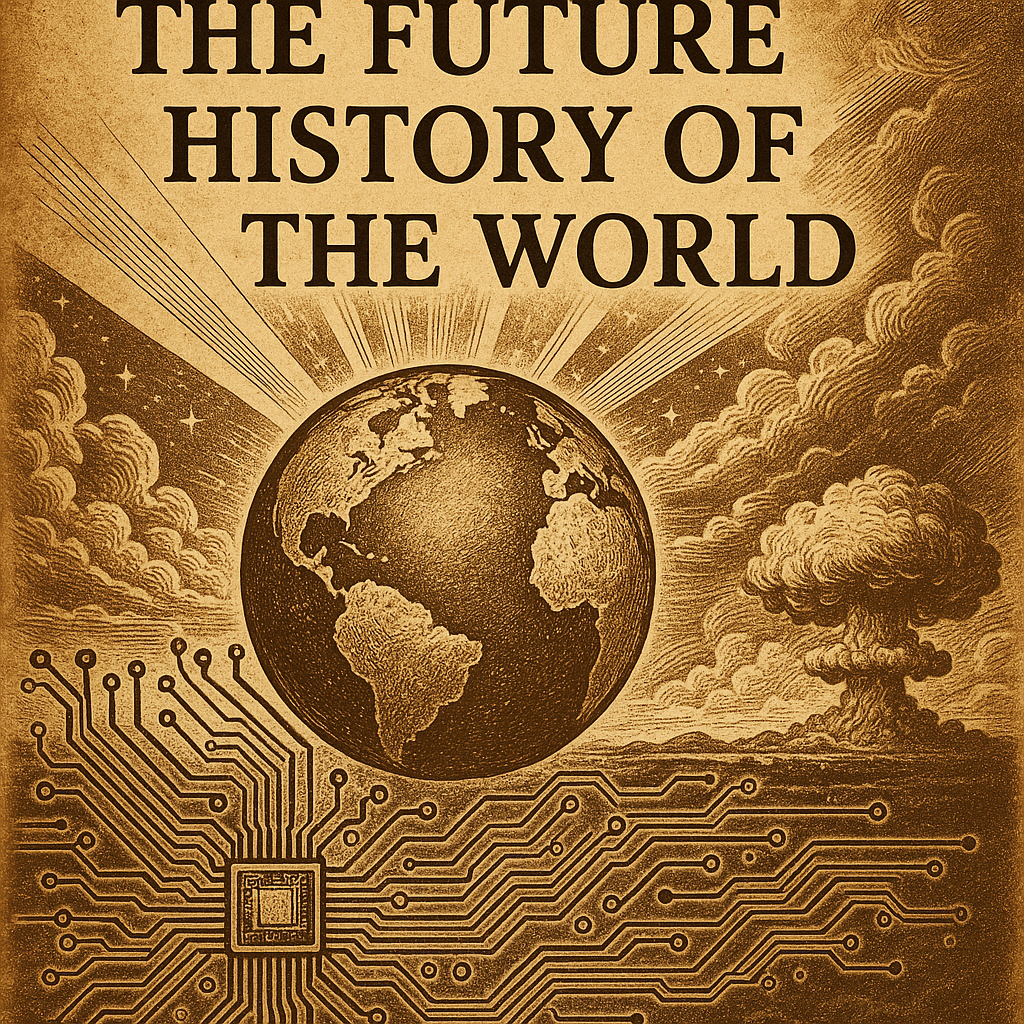Introduction
This essay is part of my long-term research on what I call the future history of the world. The concept rests on the assumption that civilization is not static; rather, it is shaped by continuous interaction between science, technology, religion, politics, and human imagination. In examining the trajectory of global order, I present three foundational arguments.
First, the size and measure of future world civilization will be determined by the progress of science and technology. If these domains fail to safeguard humanity, religion will once again be summoned to regulate the world order. Yet if religion lacks a unified standard, science and technology may spiral into destructive forces.
Second, if science and technology cannot awaken the spirit of humanity, the global order will collapse. In recent decades, the rapid growth of scientific advancement has not been matched with moral and spiritual growth. Instead, science and technology are increasingly projected as tools to transform humans into “gods” (Kaku, 2011).
Third, when science and technology become predators of religious spirit, developed nations will exploit them to dominate weaker nations. War in the future will not always take the form of bombs and guns, but also of character assassination, digital surveillance, economic domination, and cultural manipulation. Thus, the weaponization of science and technology will continue to shape the architecture of world order.
From these three premises, I outline eight possible scenarios for the world’s future history.
Scenario One: The West’s Annexation of Global Energy
In this scenario, Western powers consolidate their dominance by controlling the world’s energy resources. Energy becomes the axis of survival, not only for industrial civilization but also for political legitimacy. Intelligence agencies and multinational corporations work hand in hand to secure oil, gas, rare earth minerals, and renewable energy sources.
Through military presence and diplomatic pressure, Western powers ensure that resource-rich countries remain suppliers rather than beneficiaries. This model of annexation secures continuity for Western civilization, while many nations with abundant natural wealth still face poverty and inequality.
Scenario Two: The Continuation of War
History shows that war is the engine of technological progress. In the future, war will persist, though with new forms: cyber warfare, drone warfare, AI-powered weapons, and information warfare.
Weak nations face only two choices: to submit to Western interests or to resist and risk destruction. The global arms race, particularly in defense and security technologies, will become central to geopolitical rivalry. As George Friedman (2010) noted, the twenty-first century is projected as the “American Century,” where the United States prepares to enforce its hegemony through both war and deterrence.
Scenario Three: Expansion Through Division
Influence is one of the most significant keywords in contemporary geopolitics. Developed nations expand their power by dividing and fragmenting other states—politically, ethnically, economically, or culturally.
By exporting ideologies, creating dependency on aid, or manipulating internal divisions, global powers weaken states from within. The more fragmented a region becomes, the easier it is to control. Influence becomes both a weapon and a shield in the twenty-first century world order.
Scenario Four: The Gift of Technology, the Extraction of Energy
The West’s motto has always been: “We give you our technology, but we take your energy.” Through globalization, technology is distributed worldwide, yet often without genuine transfer of knowledge. Developing nations become consumers rather than creators of technology.
This massive technological diffusion fosters modernization but also creates dependency. Nations that fail to adopt technology are considered “backward.” Meanwhile, the West secures not only energy but also control over human thought, culture, and economy through digital ecosystems, AI platforms, and surveillance technologies.
Scenario Five: War Against Extraterrestrials
Though speculative, the possibility of human contact with extraterrestrial intelligence (Higher Intelligence) cannot be dismissed. Programs such as SETI (Search for Extraterrestrial Intelligence) highlight the seriousness of Western scientific projects to probe outer space.
If two-way communication with non-human civilizations occurs, it would radically reshape the meaning of humanity, religion, and politics. Science fiction has long served as a medium to prepare societies for such a scenario. Wars of the future may not only be inter-state but also inter-species.
Scenario Six: Technology as the Power of Prophets
In Abrahamic traditions, Prophet David was known for his mastery over iron, while Prophet Solomon was granted control over the natural and spiritual realms. Today, Western ambitions attempt to replicate these prophetic powers through technology: quantum computing, nanotechnology, genetic engineering, and AI.
The dream is to reach the level of divine control—speaking to animals through bio-cybernetics, commanding the environment through climate engineering, or even extending human life indefinitely through transhumanism. In this scenario, humanity attempts to become godlike, repeating the age-old temptation of hubris.
Scenario Seven: The Heavenly Kingdom and the Search for God Through Technology
The West continues to link technology with the idea of divinity. Through space exploration, UFO studies, and the development of artificial intelligence, humans attempt to achieve godlike knowledge and control.
Science fiction novels and Hollywood films often speculate on how humans will respond to divine or extraterrestrial encounters. This cultural production reflects a deeper human anxiety: the desire to either meet God or become like God. Technology, in this vision, becomes the new scripture and laboratory of divinity.
Scenario Eight: The Apocalypse and the End of Civilization
No human knows the exact moment of the world’s end, except the Creator. Yet, apocalyptic imagination permeates both religion and technology. In Islam, the Qur’an and Hadith describe clear signs of the Apocalypse. In the West, films and futuristic novels simulate end-of-the-world scenarios: nuclear holocausts, pandemics, AI rebellion, or cosmic catastrophes.
This obsession with the end of time influences how technology is developed: space colonies, Mars exploration, and survival technologies all reflect humanity’s attempt to escape its own mortality. In this scenario, the end of history is not only theological but also technological.
Conclusion
The interplay among science, technology, religion, and power will shape the future of the world. The eight scenarios above reveal that while technology promises progress, it also carries seeds of domination, division, and destruction.
If science and technology are not balanced with spiritual values and ethical guidance, they will become predators rather than protectors. The destiny of world civilization depends not only on who controls energy or weapons but also on whether humanity can rediscover the spiritual compass that prevents civilization from collapsing.
The central question for the twenty-first century and beyond is clear: will science and technology serve humanity, or will humanity become enslaved by its own creations?



Leave a Reply